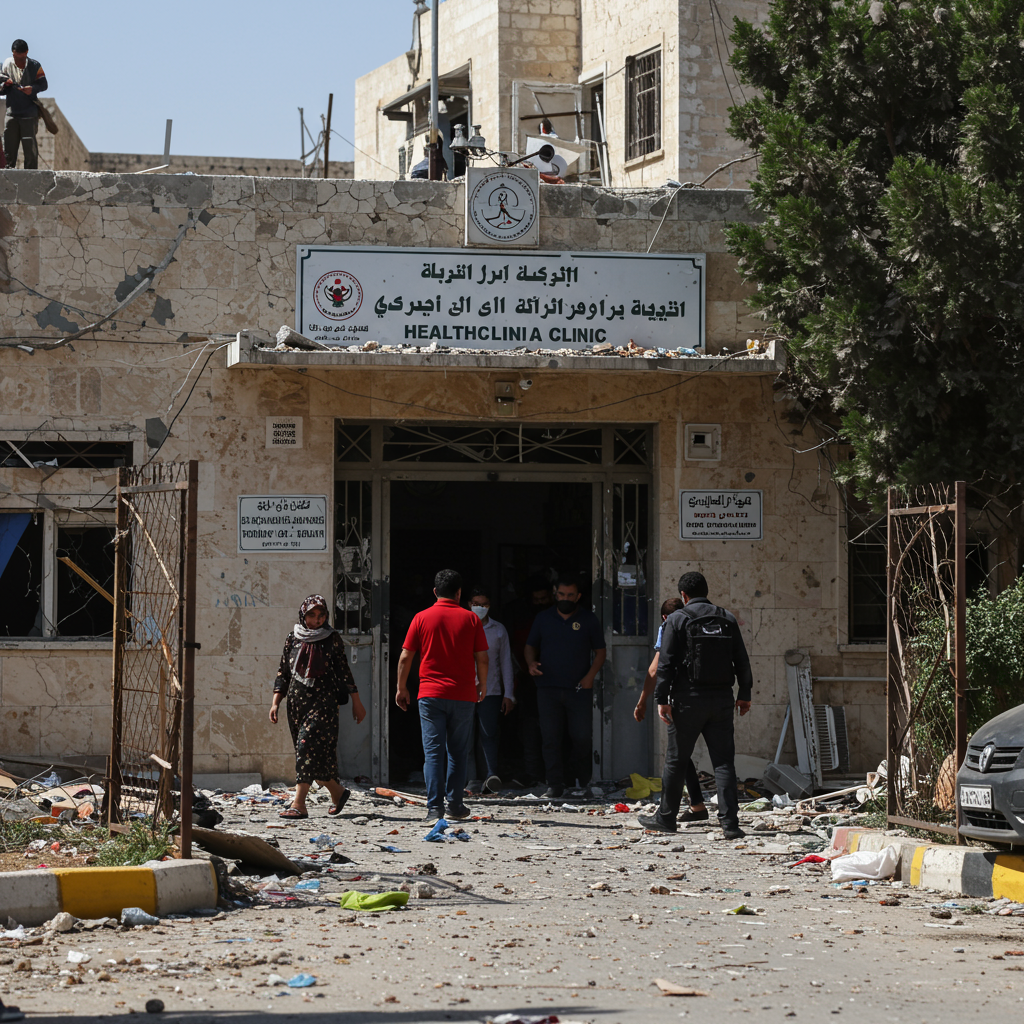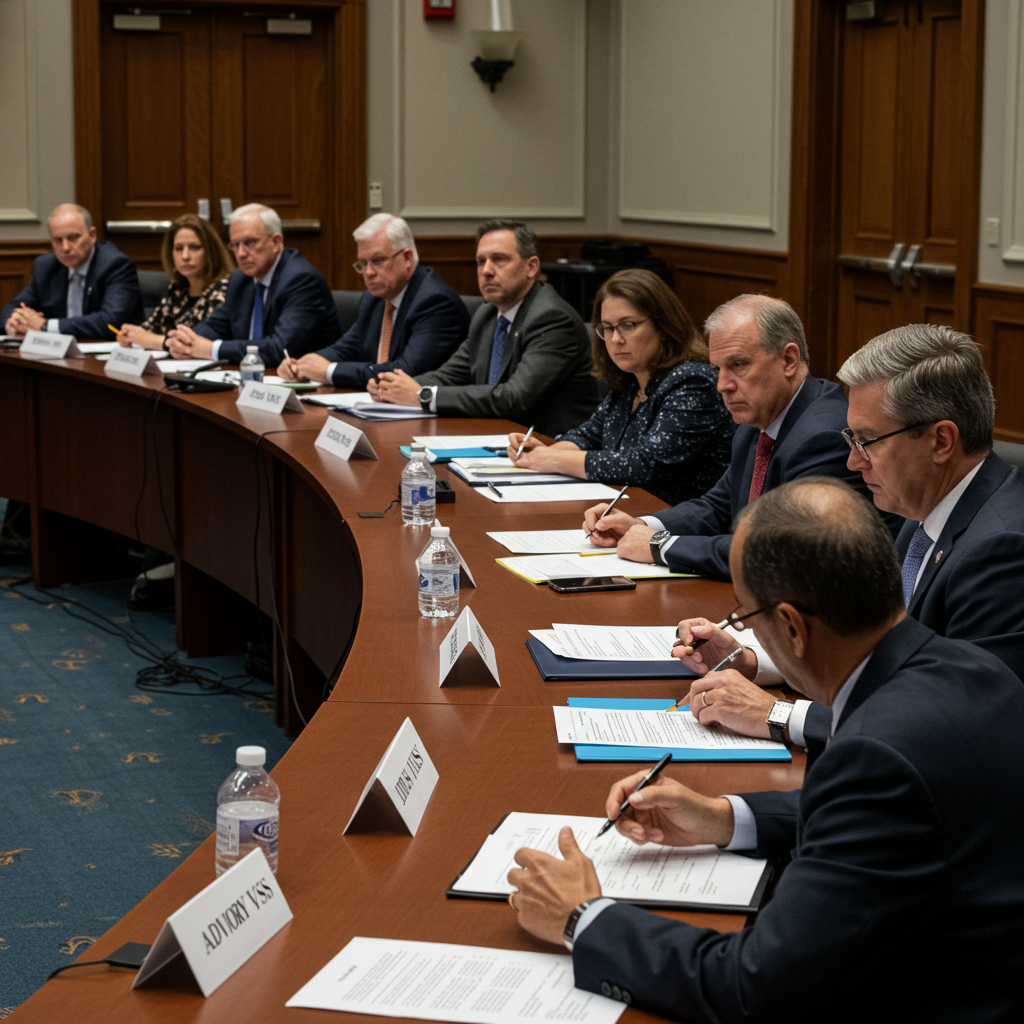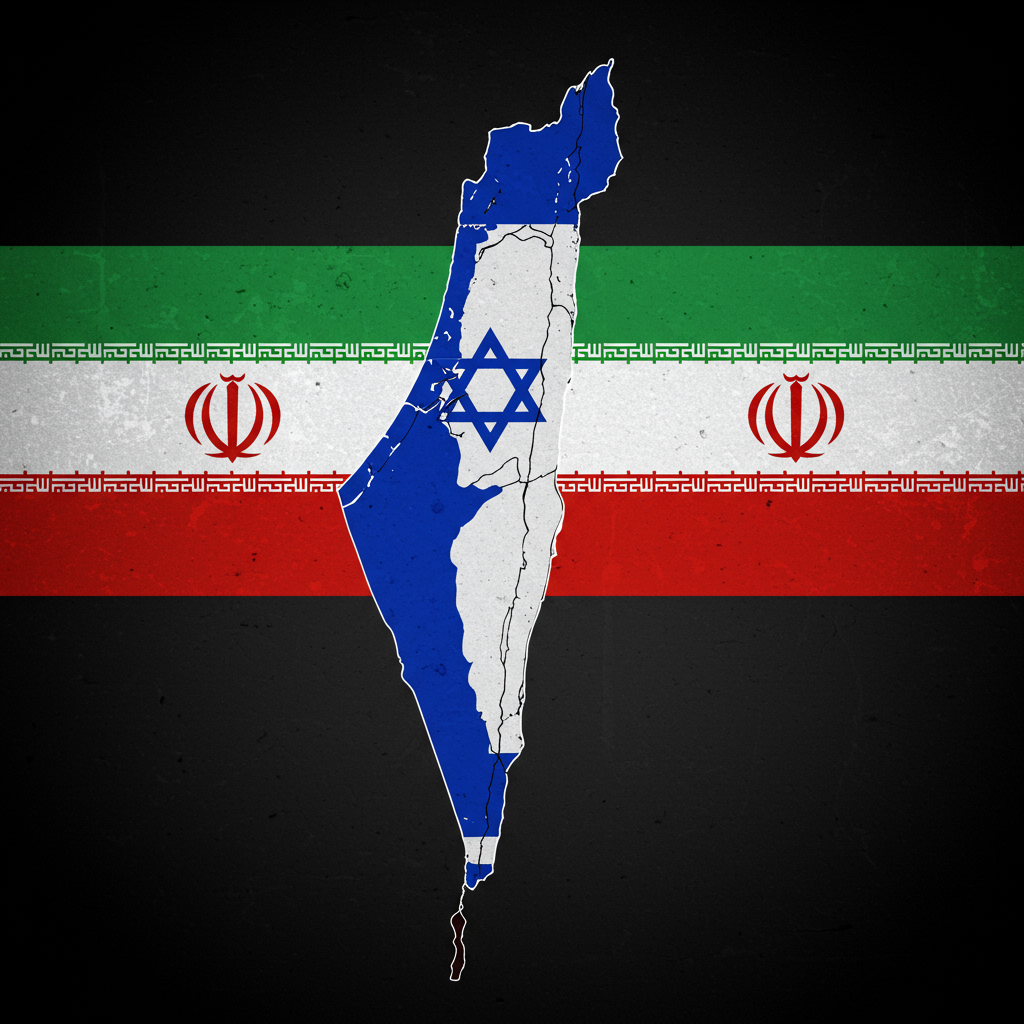A devastating Israeli strike in central Gaza reportedly killed at least 15 Palestinians, including multiple children and women, as they waited outside a health clinic for vital nutritional supplements and medical care. The incident in Deir al-Balah on Thursday morning has drawn widespread condemnation and highlighted the dire humanitarian situation amidst ongoing conflict and stalled ceasefire negotiations. This attack was part of a day that saw dozens of Palestinians killed across the territory, adding to the escalating death toll.
Deadly Strike Hits Aid Seekers
The targeted facility was the Altayara health clinic, operated by the US-based aid organization Project Hope. According to reports, a large group of individuals, many of them women and young children, had gathered outside the clinic doors early Thursday, anticipating its opening. They were seeking treatment for various conditions, including malnutrition, infections, and chronic illnesses, and were specifically queuing for essential nutritional supplements desperately needed in the besieged enclave.
Witnesses described the suddenness and horror of the attack. Yousef al-Aydi recounted hearing the distinct sound of a drone nearing before a powerful explosion erupted. “The ground shook beneath our feet,” he stated, describing the immediate aftermath as a scene of “blood and deafening screams.” Mohammed Abu Ouda also reported seeing a mother and child killed instantly in the blast. The impact left a small crater near where the aid seekers had been standing, scattering bodies and belongings like children’s slippers. Witnesses suggested the casualty count could have been even higher on a day with a longer queue.
Scenes of Grief at Al-Aqsa Hospital
The injured and deceased were transported to the nearby Al-Aqsa Martyrs Hospital in Deir al-Balah. Video footage from the hospital showed the bodies of several children lying on the floor as medical staff struggled to tend to the wounded. At the hospital mortuary, relatives gathered in mourning, weeping over the deceased children. Families carefully wrapped the small bodies in white shrouds and body bags before performing funeral prayers.
Among the victims identified were a pregnant woman named Manal and her young daughter, Fatima, according to a relative, Intisar, who said Manal was “queuing to get the children supplements” when the strike occurred. Manal’s son was reported to be in intensive care. The emotional weight of the tragedy was palpable, with one woman asking heartbreakingly, “For what sin were they killed?” Another woman lamented the global inaction, stating, “We are dying before the ears and eyes of the whole world. The whole world is watching the Gaza Strip. If people aren’t killed by the Israeli army, they die trying to get aid.” Nidal Al-Nouri shared that his 14-year-old daughter, Sama, was among the children killed, expressing his pain that she died seeking aid while hoping for a ceasefire to return to school.
Aid Group Condemns Attack
Project Hope confirmed the devastating incident. Dr. Mithqal Abutaha, a project manager for the group, emphasized the tragedy, stating, “No child waiting for food and medicine should face the risk of being bombed.” Rabih Torbay, president and CEO of Project Hope, issued a strong condemnation. He described their clinics in Gaza as crucial “place[s] of refuge” where families seek care for children, women receive pregnancy and postpartum support, and people get treatment for malnutrition. He expressed profound heartbreak that “innocent families were mercilessly attacked as they stood in line waiting for the doors to open.”
Torbay characterized the strike as a “blatant violation of international humanitarian law,” underscoring that the event served as a “stark reminder that no-one and no place is safe in Gaza, even as ceasefire talks continue.” He stressed that such attacks “cannot continue.” Unicef Executive Director Catherine Russell echoed this sentiment, labeling the killing of families attempting to access life-saving aid as “unconscionable.”
Israeli Military Response and Broader Context
The Israeli military, the Israel Defense Forces (IDF), issued a statement regarding the strike in Deir al-Balah. They claimed the strike targeted a member of Hamas’s elite Nukhba forces who had participated in the October 7, 2023, attack on Israel. The IDF stated they were “aware of reports regarding a number of injured individuals in the area” and that the “incident is under review.” They concluded by expressing “regrets any harm to uninvolved individuals.” However, reports from several sources noted that the IDF provided no immediate evidence to support the claim that a militant was present or specifically targeted at that location and time.
The deadly strike occurred on a day marked by intense Israeli military activity across Gaza. Reports on the total number of Palestinians killed across the territory on Thursday varied, ranging from 41 to 82, depending on the source, indicating widespread bombardments and gunfire. This included incidents like a drone strike on tents in the coastal al-Mawasi area, reportedly killing five people, and multiple fatalities in strikes in Gaza City, Khan Younis, and near aid distribution centers in Rafah, where civilians seeking assistance were reportedly killed by gunfire.
Stalled Ceasefire Negotiations
The violence unfolded against the backdrop of ongoing, indirect proximity talks aimed at securing a ceasefire and hostage release deal. Mediated by the United States, Qatar, and Egypt, negotiations in Doha have reportedly stalled. Despite earlier expressions of optimism from US officials, including President Donald Trump, mediators cautioned that reaching an agreement would take time due to “key stumbling blocks” and significant gaps remaining between the demands of Israel and Hamas.
According to reports from Israeli officials, it could take another one or two weeks to reach an agreement. Israeli Prime Minister Benjamin Netanyahu has publicly stated that while a temporary ceasefire (potentially 60 days) might be possible, negotiations for a permanent end to the war would only commence afterwards. Israel’s core conditions for ending the conflict remain the disarmament of Hamas and the demilitarization of Gaza. Israeli officials have also stated they would require the IDF to maintain a presence throughout Gaza before any handover to a different governing entity, and that those who do not disarm “will die.” Hamas, in turn, has blamed Israeli “intransigence” for the difficulties in talks and insists on a “comprehensive” agreement that guarantees an end to the Israeli offensive, rejecting conditions that would allow Israeli forces to remain or resume military activity.
Humanitarian Crisis Worsens
The humanitarian situation in Gaza continues to deteriorate drastically. Over 21 months of conflict have led to widespread destruction and displacement. More than 90% of homes are estimated to be damaged or destroyed. Essential systems like healthcare, water, sanitation, and hygiene have collapsed. Severe shortages of food, fuel, medicine, and shelter persist. Aid access remains severely restricted, contributing to what humanitarians describe as “famine-like conditions” in many areas.
Attacks on civilians attempting to access aid have been repeatedly reported, with hundreds of Palestinians reportedly shot dead at food distribution sites since late May. The delivery of essential supplies faces numerous obstacles. While the EU announced a deal with Israel to open more aid crossings, repair infrastructure, and protect aid workers, effective implementation remains crucial. A recent UN fuel delivery of 75,000 liters was welcomed but deemed insufficient for even a single day’s needs across the territory, with warnings that vital services could cease without adequate and consistent supplies. Doctors have reported dire conditions, including babies at risk of death from lack of formula and requiring multiple newborns to share single incubators due to fuel shortages impacting generators for medical equipment.
Impact on Healthcare and Reporting
The conflict has had a devastating impact on Gaza’s already fragile healthcare system. The United Nations humanitarian agency OCHA documented at least 686 attacks affecting healthcare facilities, transport, and personnel in Gaza as of May 2025. These include attacks on hospitals, detention of medics, and restrictions on vital medical supplies. Facilities like Nasser hospital in Khan Younis have faced direct impacts, with reports of shrapnel hitting ICU windows.
Reporting on the conflict from within Gaza also presents significant challenges. International reporters have largely been banned from entering independently since October 7, 2023, requiring Israeli military escorts which limit movement and interaction. Palestinian journalists face extreme dangers, with over 180 killed, and journalistic organizations stating that many were “directly targeted.” These restrictions make independent verification of events and casualties difficult.
Frequently Asked Questions
What exactly happened during the Israeli strike in Deir al-Balah?
On Thursday morning, an Israeli strike hit an area outside the Altayara health clinic in Deir al-Balah, central Gaza. Families, including many children, were reportedly queuing there to receive nutritional supplements and medical treatment from the Project Hope-run facility. The strike resulted in at least 15 deaths, including multiple children and women, and numerous injuries, according to hospital officials and aid groups. Witnesses described hearing a drone before the explosion.
What is the current humanitarian situation like for people in Gaza?
Gaza is facing a severe humanitarian crisis after over 21 months of conflict. Most of the population has been displaced, and over 90% of homes are damaged or destroyed. Basic services like healthcare, water, and sanitation have largely collapsed. There are critical shortages of food, fuel, medicine, and shelter, leading to widespread malnutrition and “famine-like conditions” in many areas. Accessing aid is extremely dangerous, with reports of civilians being killed while trying to reach distribution points.
What are the main obstacles preventing a ceasefire agreement in Gaza?
Ongoing indirect talks mediated by the US, Qatar, and Egypt face significant hurdles. Key disagreements include Israel’s demand to maintain military presence in Gaza and reserve the right to resume fighting after any temporary truce, and Hamas’s demand for assurances against the resumption of the offensive and a comprehensive agreement that permanently ends hostilities. Israel also requires Hamas to disarm and Gaza to be demilitarized, conditions Hamas opposes under the current circumstances.
Conclusion
The strike outside the Project Hope clinic in Deir al-Balah tragically illustrates the immense human cost of the ongoing conflict in Gaza, particularly for civilians seeking essential aid. The deaths of children and families queuing for vital supplies underscore the severity of the humanitarian crisis and the urgent need for protection and unimpeded access to aid. As ceasefire negotiations continue to face difficulties, the international community remains seized with the dire situation, grappling with the immense challenges of addressing the humanitarian catastrophe and finding a path towards a sustainable resolution.




